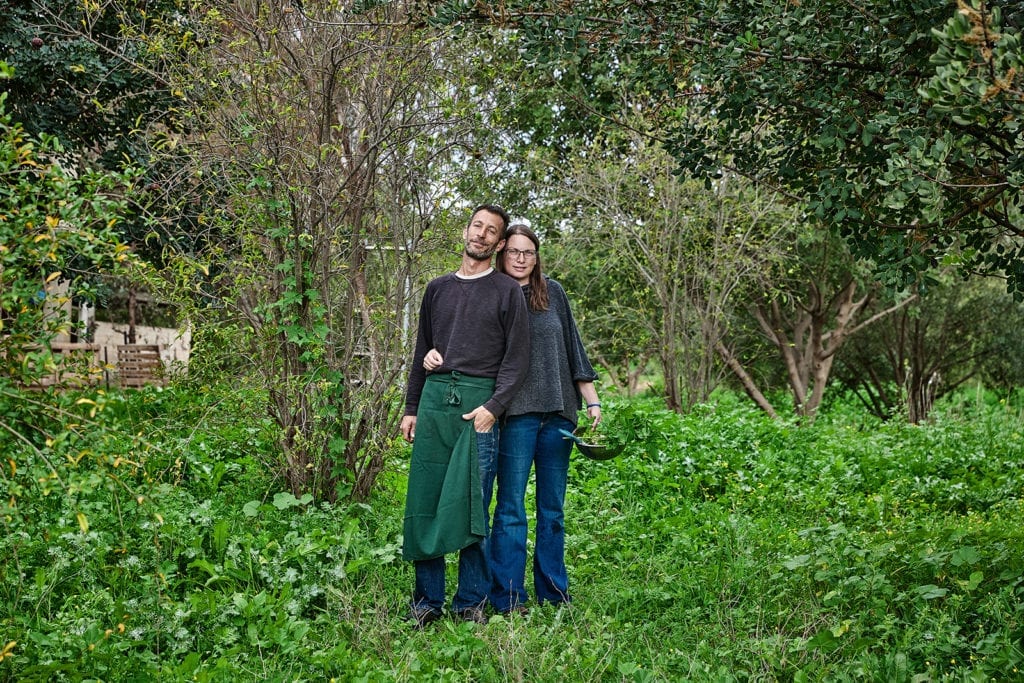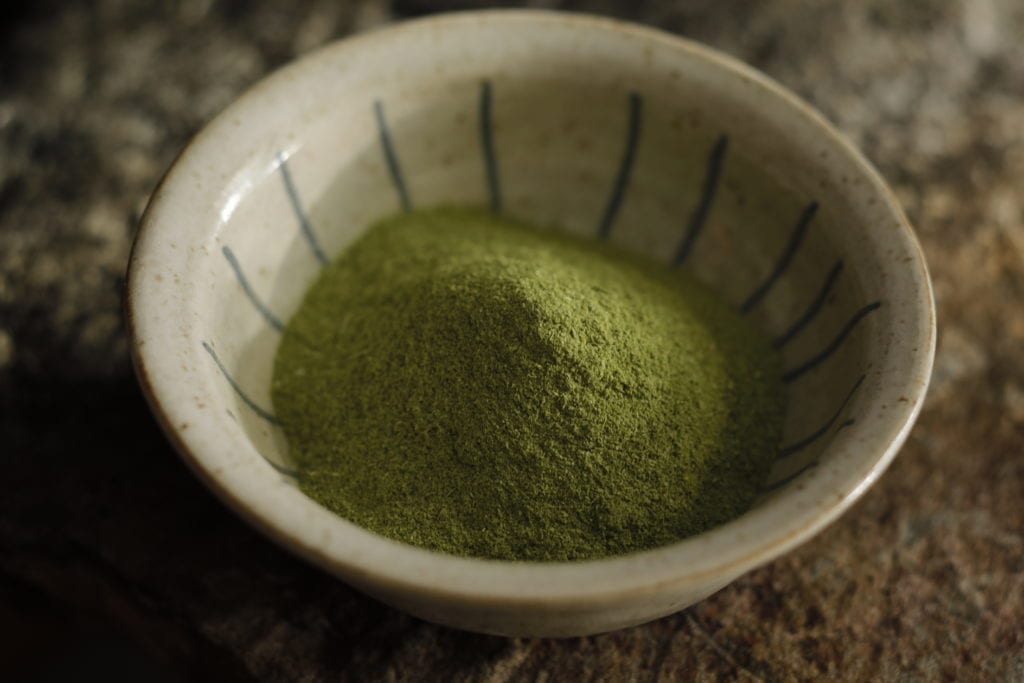Set in a historical customs building on the Jordan-Israel border, Rutenberg restaurant serves a menu based on local, seasonal ingredients, recreating ancient recipes and using traditional techniques of preserving, pickling, and fermentation. A large part of the produce comes from the vegetable garden and orchard, as well as from the wild fields surrounding the secluded restaurant.

For a resident of Israel in the 21st century, nothing is more natural than adding freshly squeezed lemon juice to a salad, drinking fresh orange juice in winter, or peeling a juicy clementine. Citrus is an inseparable part of Middle Eastern cuisines, however, it’s not native to the region. It originated in Southeast Asia and initially there were only a few varieties, (among them citron, pomelo ,and mandarine oranges). Still, the Middle East played a significant part in its historical and culinary journey.
According to archaeological research and written records, citrus fruits arrived in the Middle East in the first centuries BCE via ancient trade routes connecting East Asia and the Mediterranean Basin. The Jews, who used citron in their religious rituals, and the Arabs, who created an extensive empire lasting hundreds of years, are credited with spreading citrus agriculture and the practice of cooking with citrus. The shamouti orange, a mutation discovered in Jaffa orchards at the end of the 19th century and subsequently marketed under the brand “Jaffa orange,” received worldwide fame and became one of the first symbols of the Israeli kitchen. Locally, the wide use of citrus is not limited to the fruit’s pulp and juice, but extends to other parts of the tree, such as its trunk, leaves, and blossoms.

A Brief History of Citrus in the Levant
The earliest archeological evidence of citrus in the Middle East was found in the area of Ramat Rachel near Jerusalem in the 5th and 6th centuries BCE and in Carthage in North Africa around the 3rd and 4th centuries BCE. Ingredients and foods migrated with the merchants who travelled the ancient trade routes, as well as with armies: the chronicles of Alexander the Great’s campaigns describe Persia as a center of citrus cultivation. The conquerors also improved trade routes and enabled a more regular movement of spices and various foods to different areas of the Hellenic world.
Under Roman rule, citrus, and especially citron, became more common. Evidence of cultivation and the use of citrus, especially lemons and likely oranges too, is found throughout the empire, from Rome itself to the Egyptian frontier.
The Muslim empire, centered in Bagdad, was marked by pronounced influences of Persian and Byzantine culinary traditions. A rich culinary culture, characterized by legendary banquets, developed in the court of the Muslim caliphate in Baghdad. At these luxurious events, the richness of colors and aromas and the depth of flavors testified to the status and wealth of their hosts. The culinary literature of the Abbasid Caliphate, around the 8-9th centuries BCE, included a large selection of recipes using citrus, as well as explanations of different citrus varieties and their culinary uses. All parts of the citrus were used, from the juice to the leaves — citrus juice was used to prepare thirst-quenching lemonade, sweetened with honey; the fruits themselves were pickled, preserved, fermented, and cooked to make jams; citrus peel was used to flavor sausages; and citrus leaves were used in various beef and fish stews.
A prominent dish of the medieval Arab kitchen was sikbaj, a stew made with vinegar (“sik” means “vinegar” and “baj” means “stew”). The Persian origins of the name testify to the significant influence of the fabulous Persian cuisine on the Arab kitchen, and through it, on the Western kitchen. Researchers also believe the word escabeche derives from the same ancient Persian word, and some claim that sikbaj dishes, rich in gelatin and served cold, inspired the term “aspic” (a savory jelly). Ancient cookbooks preserved dozens of lamb, goat, and fish-based sikbaj dishes, cooked with vinegar and its ancient complement, honey or fruit syrups (in the medieval Arab kitchen, sweet-and-sour was a particularly popular flavor). Some of these sikbaj recipes contained citrus leaves — lemon, citron, or orange.

The Jordan Valley, where our restaurant is located, was once under the rule of the Muslim empire, and in the earlier years, we served a modern version of the sikbaj stew, using citrus leaves from the restaurant’s orchard.
Historically, citrus fruits were often used in meat dishes, to create lighter, easier-to-digest stews. In the Middle Ages, nutrition was considered an intrinsic part of medicine, and doctors believed citrus strengthened digestion and helped the body cope with rich and heavy meals. Citrus were also used to freshen one’s breath and treat headaches, vertigo, fever, and an upset stomach. The rich citrus pantry of the Middle Ages developed out of the need to preserve food before the invention of modern refrigeration, but also because concentrated and dried citrus juice, dried citrus peel, seeds and various concoctions preserved in salt, sugar, or vinegar were used in medical potions. In 12th century Egypt, an entire book was dedicated to the health benefits of the lemon.
Over the centuries, farmers and agronomists of the Muslim empire developed new irrigation and planting methods. Improved tillage helped spread citrus agriculture into new areas controlled by the empire, such as North Africa and southern Italy and Spain. From southern Europe, the cultivation of citrus expanded to the New World with the ships of explorers, conquerors, and merchants from Spain and Portugal.
“Today, citrus fruits are now grown all over the world, yet it seems they found a special home in the Middle East. In the second half of the 19th century, Jewish and Arab farmers joined forces, and the citrus industry flourished in Palestine.”
— Izhar and Hila Ronen-Sahar
Today, citrus fruits are now grown all over the world, yet it seems they found a special home in the Middle East. In the second half of the 19th century, Jewish and Arab farmers joined forces, and the citrus industry flourished in Palestine. Acres of citrus groves were planted in the sandy soil of the coastal area, unfit for field crops and vegetable cultivation, as described in the testimonies of the travelers of the time. The citrus fruits of Palestine were shipped overseas through the Jaffa port and received worldwide acclaim, especially the shamouti, which, as we described above, was discovered in Jaffa orchards as a spontaneous mutation of the local baladi oranges. Its sweet-and-sour flavor, thin peel and few pits gained worldwide popularity.
Citrus Fruit in the Contemporary Local Kitchen
In a world of global markets, in which agriculture struggles with economic fluctuations, citrus fruits have remained one of the area’s most prominent symbols. A large selection of citrus species and varieties are grown in Israel today, the export of citrus fruits still play an important role in its economy, and agricultural research centers work to develop varieties with improved characteristics for cultivators and customers alike. The citrus pantry keeps developing, with new species and varieties being grown and new ways of preservation and cooking being developed.

The “nose to tail” approach we apply to all the ingredients we use in our restaurant, from meat to the plants gathered in the natural environment around us, is well suited to citrus as well, leading to an endless interplay of flavors, aromas and textures. In our modern world, citrus season lasts almost all year long, due to the efforts of researchers, farmers, and merchants. Yet, in our restaurant’s yard, as well as in the yards — and even streets — of the Middle East, citrus is still a seasonal produce. Preserving the different parts of the tree when they are at their prime, opens up new flavors that can be applied in the home kitchen as well.
